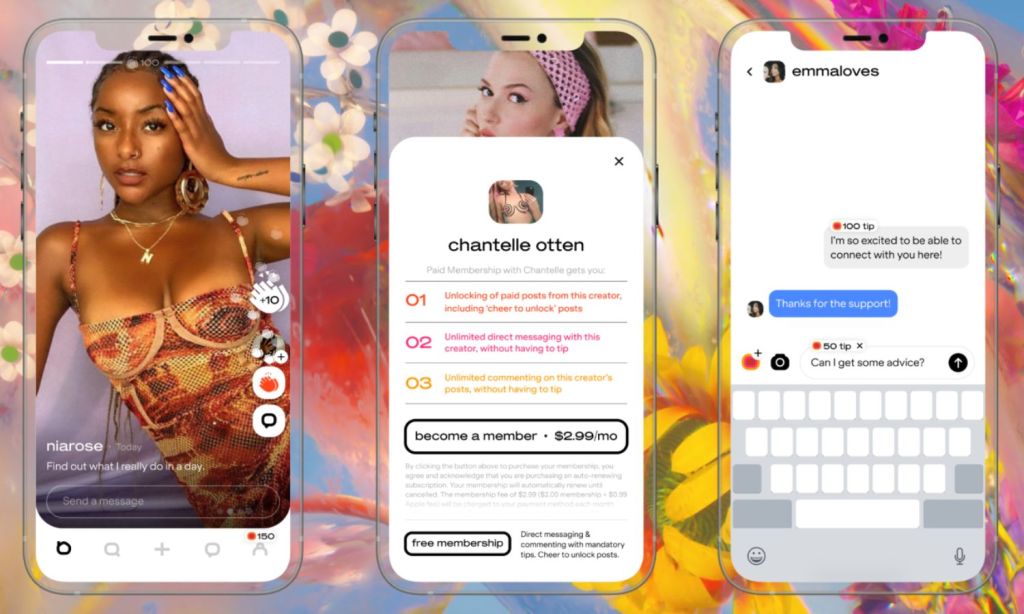While content creators once made the bulk of their coin through sponsored posts, these days, more and more are earning through subscriber content.
They’re either directing their audience to new subscription-first platforms, like Sunroom or Patreon, or taking advantage of new features on existing platforms, like Instagram’s Paid Subscriptions and Apple Podcasts Subscriptions, and putting content behind paywalls.
Patreon first launched in 2013 with the tagline ‘Changing the way art is valued’, and has arguably kicked off the shift in creator content. For a monthly fee, it allows fans to get exclusive content from content creators or celebrities.
Related: Everything to Know About New App Sunroom, Straight from the Founders Themselves
Related: Sure, Instagram’s Precise Location Might Not Be Shared But It’s Worth Turning Off Anyway
Next came OnlyFans in 2016, which featured monthly subscriptions varying from $4.99 to $49.99 and blew up in popularity during the pandemic. Though the platform become known for its adult entertainers and sex workers, in August 2021, it announced plans to ban sexually explicit content.
However, backlash from sex workers and others who made their living from earnings from it prompted them to backtrack on the decision, tweeting, “We have secured assurances necessary to support our diverse creator community and have suspended the planned October 1 policy change.”
Thank you to everyone for making your voices heard.
We have secured assurances necessary to support our diverse creator community and have suspended the planned October 1 policy change.
OnlyFans stands for inclusion and we will continue to provide a home for all creators.
— OnlyFans (@OnlyFans) August 25, 2021
This year, two other similar platforms joined the mix. Sunroom works to make women and non-binary content creators money by connecting them with their audiences via monthly subscriptions. When it launched, co-founder Battersby said the platform is meant to be an entrepreneurial space for creators to share anything from lifestyle and fashion content, to personal news, business tips, gossip and dating advice.

“We’re not a social media app, we’re not here to help you go viral or amass a huge following. We’re really a vessel for creators to come along and monetise the audience they’ve already built on another platform,” she said on POPSUGAR Australia’s podcast The Flipside. “So, if people think we’re a social network, they’ll probably be disappointed when they get on Sunroom.”
Battersby and co-founder Lucy Mort advise creators on Sunroom on the best approach for monetising their content. For example, teasing some content for free so the audience can get to know more about the creator and the type of content they could expect if they paid for a subscription.
Related: Dual Camera, Remix Opps and All the Other New Features on Instagram Reels
Related: Turns Out Your Favourite Shops Have Been Using Facial Recognition Technology to Track You
Meanwhile, Slushy launched in June this year, providing invited creators with a merged social and e-commerce platform.
“In short, we’ve merged the popular discovery features of social (TikTok) with the monetisation tools of commerce (OnlyFans) and built the most technologically advanced NSFW platform — completely free of censorship — for creators to earn directly from their fans,” says the app’s CMO, Josh Metz.
CEO and co-founder David Gross says, “By providing them with innovative tools to further connect with and monetise their audiences directly, SLUSHY will always give creators more, to fulfil their earning potential.”
As for Instagram Paid Subscriptions, after testing out subscriber badge icons, stories and lives earlier this year with select creators, it added to its offering subscriber chats and exclusive posts and reels.
? Subscriptions Update ?
Subscriptions are a great way for creators to have a predictable income & for fans to get exclusive content from creators that they love.
This update includes:
– Subscriber Chats
– Subscriber Reels
– Subscriber Posts
– Subscriber Home pic.twitter.com/5PzDTcwn8d— Adam Mosseri (@mosseri) July 14, 2022
While it’s clear the content creator economy is shifting as more of these subscription-style social apps pop up, it’s still unclear how audiences will respond. Will we pay for content from our favourite creators? How much are we willing to pay? And will this shift impact streaming services as we watch and pay for creator content instead? Only time will tell.
Read more stories from The Latch and subscribe to our email newsletter.







